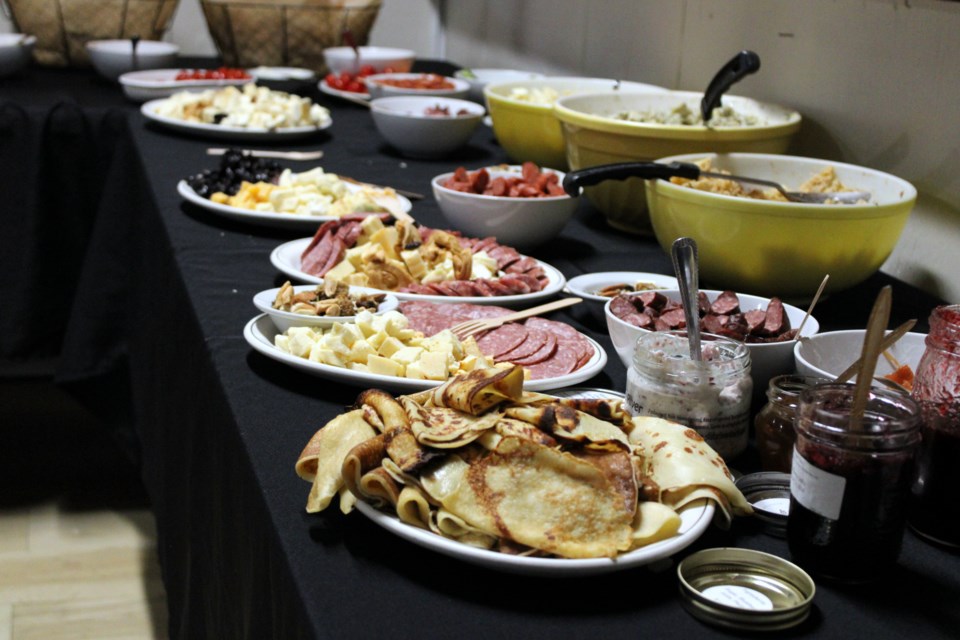THUNDER BAY — Eating local isn't always easy, but local-food advocates are working to ‘bridge the gap’ and get more local food onto the shelves and into people’s homes in Thunder Bay.
That was the goal for Bridging the Gap, hosted by the Northern Ontario Farm Innovation Alliance at the Thunder Bay Country Market on Wednesday.
The event brought together local food producers and processors into the same room with procurement specialists from around the city, including local grocers, restaurants and public service professionals.
“What we’re hoping to see is that we’re giving an opportunity for everyone to be able to create those relationships, start networking and try to find a few collaborative solutions to moving food within our region and within our community,” said Chloe Langlois, who works in economic development for the Ontario Ministry of Agriculture, Food and Agribusiness in the Thunder Bay region.
“We also want to ensure that more and more people have access to local food and really kind of destigmatize that local food is more expensive. We understand that food is expensive at this time but we want to refocus on how much economical support and impact there is to our community and to continue to support and buy local.
“We’re making sure that these relationships are there with individuals, the businesses, and the producers so that all of this amazing food is shared and is more publicly available.”
Sarah Siska, who is the coordinator for the Thunder Bay and Area Food Strategy, said it was nice to have so many different backgrounds represented at the event.
“When we talk about food systems, we often talk about all the different sectors that are involved,” Siska added. “Whether it’s someone in a restaurant, someone who’s a farmer, or someone who works in packaging and processing … how do we get all of these people to work together to create a system that works for us all?
“A lot of people think that food can’t grow up here and that’s completely not the case. Our issue is in the collaboration and in the processing and infrastructure we need to have here. Supporting that growth will have a huge impact on our region.”
Siska added that the importance of shopping locally and getting locally-grown products for food has become more noticeable in recent years.
“We’ve had global supply chain disruptions that we’ve experienced, whether that’s through the (COVID-19) pandemic, wars or whatever else,” Siska added.
“If we have a region where we’re supporting the farmers that are close to us, people aren’t going to be as impacted by those challenges. Maybe we’re not getting oranges all year round but we may be able to get strawberries in a greenhouse for a good chunk of the year or fresh greens.
“It’s the same when talk about changing climates, soil erosion and water issues. If we’re working on creating a food system that is adapting to this region by planting food, growing it and allowing it to adapt to the local conditions, we can maintain a really healthy soil structure.
“Then we’re going to be a lot more resilient to things, such as the hail that we had here this summer. The more we’re caring for our environment, the more resilient it’s going to be through fires and floods.”



